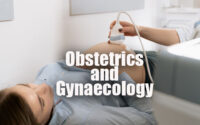Orthopaedics Questions and Answers
Orthopaedics Questions and Answers paper for the written examination is given below. Candidates who are looking for Orthopaedics exam Questions and Answers paper can find in this section. The applied candidates who are getting prepared for the Orthopaedics can view this page for the Orthopaedics Last Ten Years Questions and Answers Papers.

Download the Orthopaedics Questions and Answers & Solutions & make it as a reference for your exam preparation. Take advantage of these Orthopaedics Questions and Answers Papers in a proper manner to get qualifying Marks. Last 5 years Orthopaedics Questions and Answers Papers provided here. Candidates who are applied for the above exam can check and download the Orthopaedics Questions and Answers Papers from here.
Questions and Answers on Orthopaedics
1. An MRI of the shoulder in a patient with chronic quadrilateral space syndrome is most likely to show which of the following?
(1) Increased intra — capsular volume
(2) Loss of intra — capsular volume
(3) Fatty atrophy of the infraspinatus
(4) Fatty atrophy of the teres minor
2. A 34 year old man presents with a 3 month history of knee pain, with an inability to squat. The most likely diagnosis is –
(1) Primary osteoarthritis
(2) Osteochondral defect
(3) Loose body
(4) Posterior horn meniscal tear
3. A 21 year old army recruit developed hip and groin pain that initially started while running, but is now painful when walking across campus. Radiographs show no evidence of a stress fracture, an alpha angle of 45 degrees, and a lateral center edge angle of 30 degrees. An MRI shows focal, intense marrow edema in the superior-lateral femoral neck. What is the most appropriate treatment?
(1) Non-operative treatment with NSAIDs and reduction in mileage
(2) Operative treatment with percutaneous screw placement
(3) Cam resection
(4) Non-operative treatment with partial weight-bearing
4. Which of the following statements is correct regarding Vitamin D?
(1) 1, 25-dihydrocholecalciferol is the best laboratory study to determine a Vitamin D deficiency.
(2) Active form of Vitamin D is 25-hydroxycholecalciferol.
(3) Inactive form of Vitamin D is 24, 25- dihydroxycholecalciferol.
(4) The half-life of 1, 25-dihydrocholecalciferol is longer than 25-hydroxycholecalciferol.
5. In evaluating the radiographs of a patient with Paget’s disease, which of the following would be suggestive of the malignant change?
(1) Enlargement of bone
(2) Marked bowing
(3) Coarsened trabeculae
(4) Cortical bone destruction
6. A 5 year old boy has a history of delayed walking and difficulty climbing stairs. Physical examination shows a positive Gower sign and scoliosis. Laboratory tests show elevated serum creatine phosphokinase. A mutation of what protein results in this disorder?
(1) Dystrophin
(2) Collagen type I
(3) Neurofibromin
(4) Runt-related transcription factor 2 (Runx2)
7. Which of the following is the most common sarcoma found in the foot?
(1) Epithelioid Sarcoma
(2) Liposarcoma
(3) Fibrosarcoma
(4) Synovial sarcoma
8. Glycogen positive cells are seen in –
(1) Chordoma
(2) Osteosarcoma
(3) Fibrosarcoma
(4) Ewing’s sarcoma
9. All of the following histologic features are typical of enchondromas, EXCEPT –
(1) Low cellularity
(2) lobular architecture
(3) prominent myxoid changes
(4) Small round nuclei
10. Which of the following carcinomas typically produces purely lytic bone metastasis?
(1) Lung and breast
(2) Bladder and thyroid
(3) Lung and prostate
(4) Kidney and lung
11. What is the appropriate treatment for a 10 year old boy with Ewing’s sarcoma isolated to the proximal femur?
(1) Neoadjuvant chemotherapy and surgical excision
(2) Neoadjuvant chemotherapy, surgical excision and radiation therapy
(3) Neoadjuvant chemotherapy, surgical excision and adjuvant chemotherapy
(4) Neoadjuvant radiation therapy and surgical excision
12. You are caring for a 63 year old female with metastatic breast cancer to the lumbar spine. Her neurological examination shows significant weakness in leg function and she is having difficulty ambulating. Imaging shows significant neural element compression by the tumor and complete erosion of L1 vertebrae, She has no other sites of metastatic disease and is otherwise healthy. What treatment option do you recommend to best maintain her function?
(1) Palliative therapy
(2) Complete neural element decompression with instrumentation to stabilize the spine
(3) Complete neural element decompression, instrumentation and postoperative chemotherapy
(4) Complete neural element decompression, instrumentation and postoperative radiotherapy
13. Which is not a treatment modality in osteoclastoma?
(1) Joint Replacement
(2) Curettage
(3) Chemotherapy
(4) Excision
14. A 12 year old boy was diagnosed with Li-Fraumeni syndrome. The origin of his syndrome is related to a germ-line mutation of the tumor suppressor p53 gene. What is most common primary bone tumor associated with this gene mutation?
(1) Osteosarcoma
(2) Ewing Sarcoma
(3) Chondrosarcoma
(4) Multiple Myeloma
15. A 64 year old male has a 6 month history of back pain. Serum Laboratory studies shows a hemoglobin level of 11 mg/dl and an E.S.R of 110 mm/hr. Based on these studies the most likely diagnosis is –
(1) Metastatic breast cancer
(2) Multiple myeloma
(3) Metastatic lung disease
(4) Fibrous dysplasia
16. Which of the following is radio-resistant tumor?
(1) Ewing’s sarcoma
(2) Multiple myeloma
(3) Osteosarcoma
(4) Lymphoma
17. Which of the following soft tissue sarcomas is the most responsive to chemotherapy?
(1) Synovial sarcomas
(2) Fibrosarcoma
(3) Epithelioid sarcoma
(4) Rhabdomyosarcoma
18. Boutonniére deformity involves –
(1) Flexion at PIP and DIP joints
(2) Extension at PIP and DIP joints
(3) Flexion at PIP and Extension at DIP joint
(4) Extension at PJP and Flexion at DIP joint
19. A 3 year old boy presented with progressive anaemia, hepatosplenomegaly & osteomyelitis of jaw with pathological fracture. X-ray shows chalky white deposits on bone. Probable diagnosis is –
(1) Osteopetrosis
(2) Alkaptonuria
(3) Osteopoikilocytosis
(4) Myelofibrosis
20. Subluxation caused by rheumatoid arthritis is most commonly seen at what level of the cervical spine?
(1) Occiput C1
(2) C1-C2
(3) C2r-C3
(4) C3-C4
| Practice Set | MCQs |
| Quiz | Questions and Answers |
21. Which of the following is a primary defect in Paget’s disease?
(1) Osteoblast
(2) Osteoclast
(3) Osteocyte
(4) Fibroblast
22. Which of the following most accurately describes the cause of Osteopetrosis?
(1) Decreased expression of type I collagen
(2) Decreased mineralization of osteoid matrix
(3) Loss-of-function of GS alpha protein gene
(4) Loss-of-function of carbonic anhydrase II gene
23. Denosumab — a monoclonal antibody against RANKL receptor is used in treatment of –
(1) Rheumatoid arthritis
(2) SLE
(3) Osteoarthritis
(4) Osteoporosis
24. The commonest cause for a Charcot’s arthropathy in the upper limb is –
(1) Hansen’s disease
(2) Myelomeningocele
(3) Diabetes
(4) Syringomyelia
25. Hypercalcemia commonly occurs in which of the following bone lesion?
(1) Osteosarcoma
(2) Malignant fibrous histiocytoma
(3) Multiple myeloma
(4) Chondrosarcoma
26. What is the World Health Organization (WHO) definition of Osteoporosis?
(1) Bone mineral density less than 1 standard deviation below the mean of a young, healthy adult.
(2) Bone mineral density at least 2.5 standard deviation below the mean of a young, healthy adult.
(3) T-score less than — 2.5.
(4) Both (2) and (3)
27. Which of the following best describes the mechanism by which Osteoprotegerin (OPG) plays a role in RANKL — mediated osteoclast bone resorption?
(1) inhibits RANKL — mediated osteoclast bone resorption by directly binding to RANKL.
(2) inhibits RANKL — mediated osteoclast bone resorption by directly binding to the RANK. receptor on osteoclasts.
(3) stimulates RANKL —- mediated osteoclast bone resorption by directly binding to RANKL.
(4) stimulates RANKL — mediated osteoclast bone resorption by directly binding to the RANK receptor on osteoclasts.
28. Rugger Jersey spine is seen in –
(1) Fluorosis
(2) Achondroplasia
(3) Renal Osteodystrophy
(4) Marfan’s Syndrome
29. Looser zone is a feature of –
(1) Metastasis
(2) Osteoporosis
(3) Scurvy
(4) Osteomalacia
30. Which is not seen in Paediatric Vitamin D deficiency?
(1) Harrison’s sulcus
(2) Wimberger sign
(3) Rachitic rosary
(4) Craniotabes
31. In a patient with arm pain and paraesthesia, which of the following symptoms or physical exam findings support a cervical radiculopathy as opposed to a peripheral neuropathy?
(1) Relief of pain when holding the arm above the head.
(2) Reproduction of pain with tilting head to affected side and rotating head to contralateral side.
(3) Compensatory inter — phalangeal joint flexion of the thumb when attempting to pinch.
(4) Patient is unable to make “OK” sign with index finger and thumb.
32. The most common sequelae of TB spondylitis in adolescent is –
(1) Fibrous ankylosis
(2) Bony ankylosis
(3) Pathological dislocation
(4) Chronic osteomyelitis
33. Extraforaminal L4—L5 disc prolapse involves which nerve root?
(1) L3
(2) L4
(3) L5
(4) S1
34. Earliest reflex to appear after spinal shock is –
(1) Ankle jerk
(2) Knee jerk
(3) Abdominal reflex
(4) Bulbocavernosus reflex
35. Striated vertebra are seen in –
(1) Metastasis
(2) Tuberculosis
(3) Osteoblastoma
(4) Hemangioma
36. A number of potential complications are associated with the direct lateral approach to the lumbar spine; which complication is most common?
(1) Infection
(2) Iliopsoas weakness
(3) Injury to the aorta
(4) Foot drop
37. Among patients with adolescent idiopathic scoliosis, a thoracolumbosacral orthosis is most effective for which type of curve?
(1) Apex of the curve is at T3
(2) Apex of the curve is at T8
(3) Apex of the curve is at L1
(4) Apex of the curve is at L2
38. An 18-year-old presents with back pain with rounded — thoracic kyphosis of about 40°. On Examination — No spinal tenderness and deformity does not correct with prone positioning. Most likely diagnosis is –
(1) Post tubercular kyphosis
(2) Postural kyphosis
(3) Scheuermann’s disease
(4) Adolescent idiopathic scoliosis
39. Symmetrical areflexic bladders, bowel and lower limb occur in –
(1) Conus Medullaris Syndrome
(2) Central Cord Syndrome
(3) Cauda Equina Syndrome
(4) Brown-Sequard Syndrome
40. A type 2A Hangman’s fracture, which has the potential to overdistract with traction has which of the following hallmark findings?
(1) Anterior translation of greater than 3 mm
(2) Severe angulation with minimal translation
(3) Associated C1 ring fracture
(4) Extension at fracture site
41. A 45-year-old woman with a history of rheumatoid arthritis has C1-C2 instability with neurologic deterioration. Her posterior atlantodens interval is 10 mm. Which fixation technique will be the most biomechanically sound to facilitate fusion across the atlanto axial junction?
(1) Gallie fusion
(2) Use of C1-C2 transarticular screws
(3) Brooks fusion
(4) Onlay grafting with a halo vest
42. What is the prognosis for ambulation from best to worst for patient with an incomplete spinal cord injury?
(1) Central cord syndrome, Interior cord syndrome, Brown-Sequard syndrome
(2) Central cord syndrome, Brown-Sequard syndrome, Anterior cord syndrome
(3) Brown-Sequard syndrome, Anterior cord syndrome, Central cord syndrome
(4) Brown Sequard syndrome, Central cord syndrome, Anterior cord syndrome
43. A 25-year-old athletic woman has a 16 week history of left lower — extremity radiating pain in an S1 distribution: MRI images obtained by her family physician reveal a large L5 — S1 paracentral disk herniation impinging on the left Si nerve root. You suggest a left sided L5 — S1 microdiscectomy. You would like to counsel patient about tubular discectomy and fen procedures, that —
(1) There are no differences in functional outcome.
(2) Open discectomy is associated with superior functional outcomes.
(3) Tubular discectomy is associated with superior short and long term results.
(4) Tubular discectomy is associated with inferior short — term results but superior long — term outcomes.
44. In a patient with a C5 — C6 herniation, the most likely sensory deficit will be in the –
(1) Lateral shoulder
(2) Radial forearms, thumb and index finger
(3) Dorsal forearm and little finger
(4) Roller forearm and palm
45. Which factor is most important when attempting to prevent interbody graft subsidence?
(1) End-plate burring
(2) Surface contact area
(3) Bone quality
(4) Use of rigid fixation



